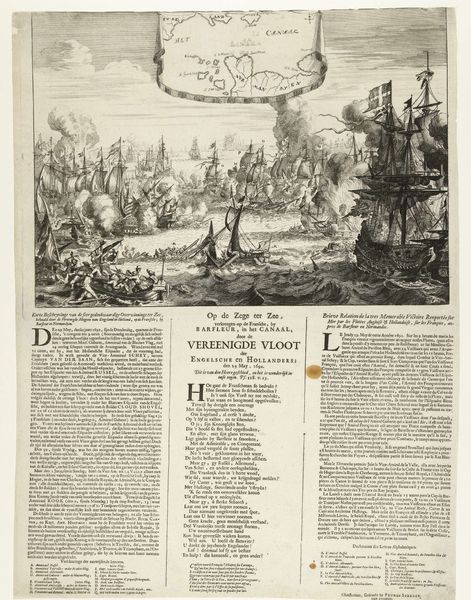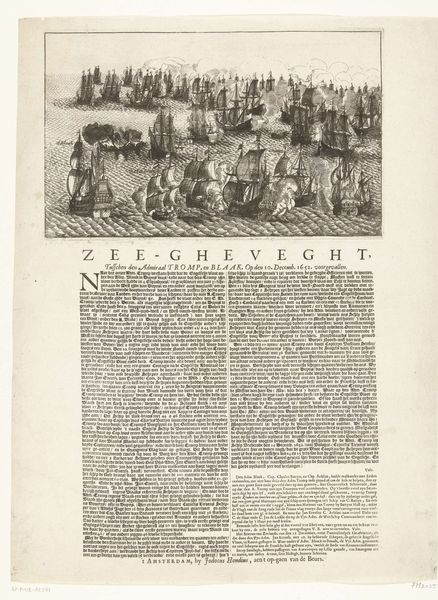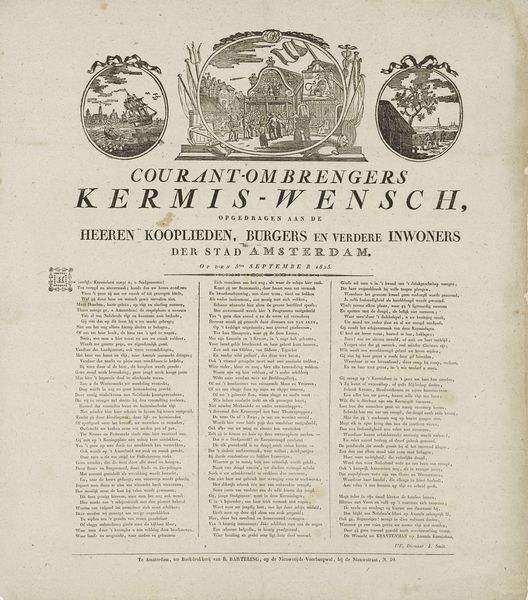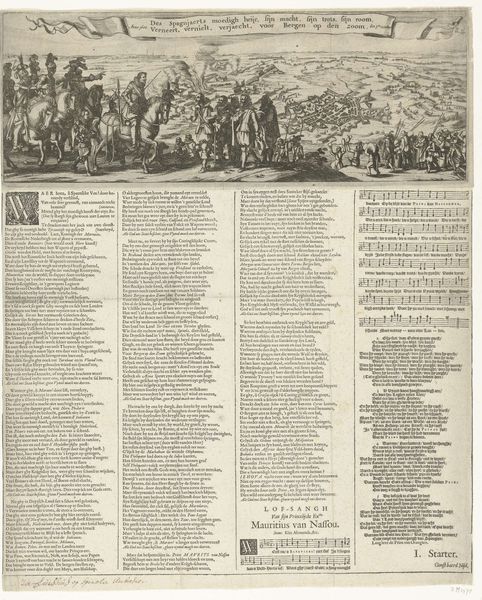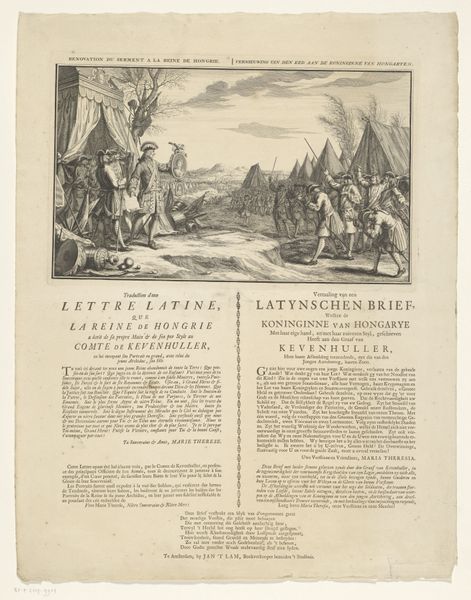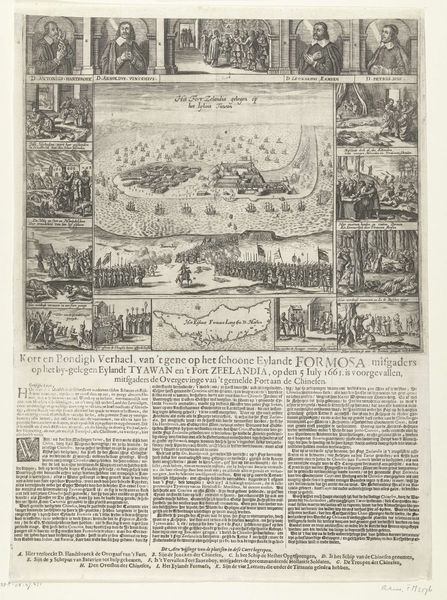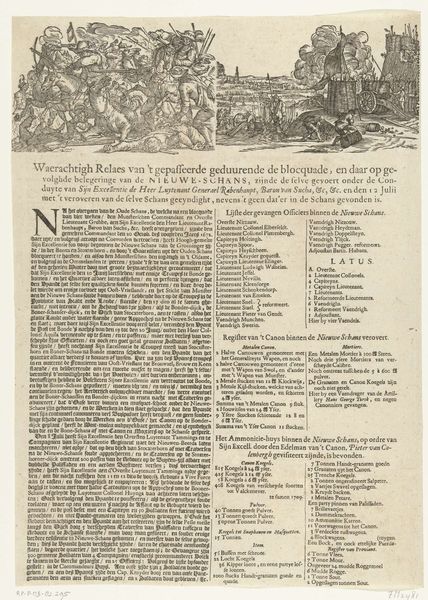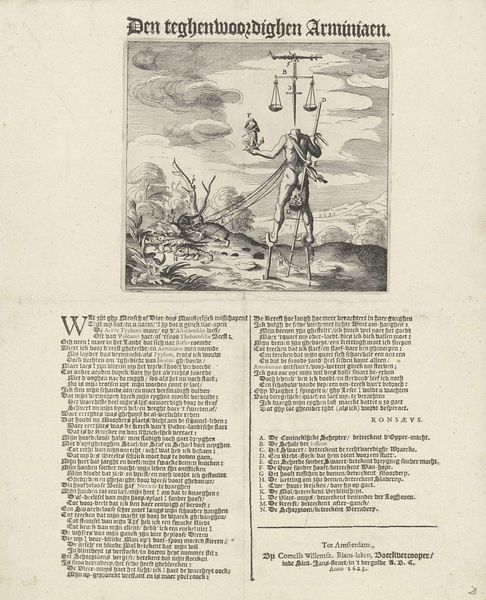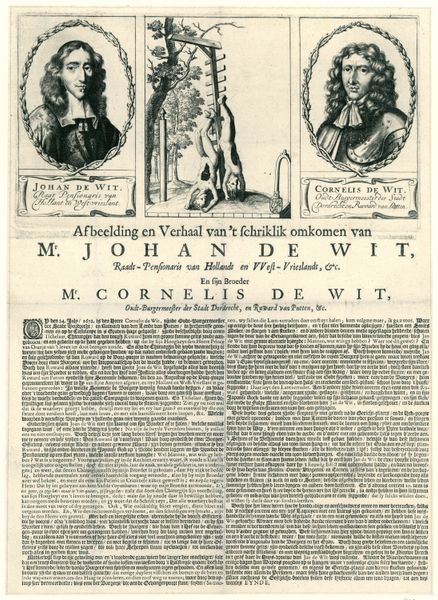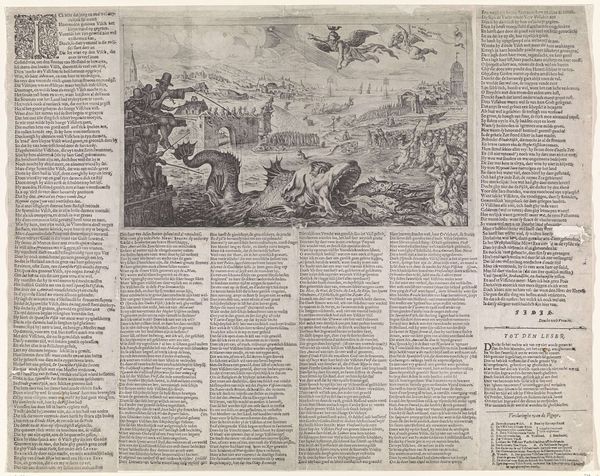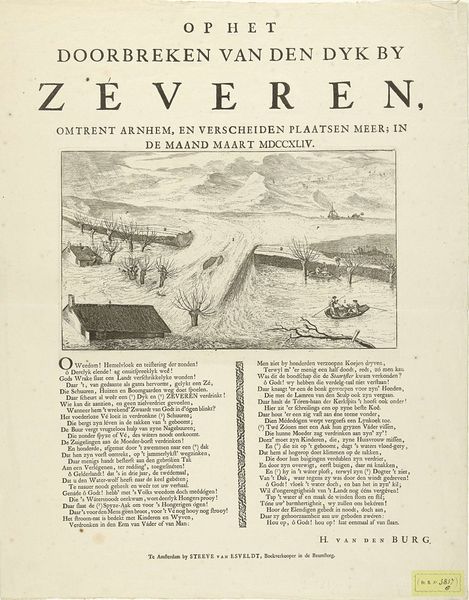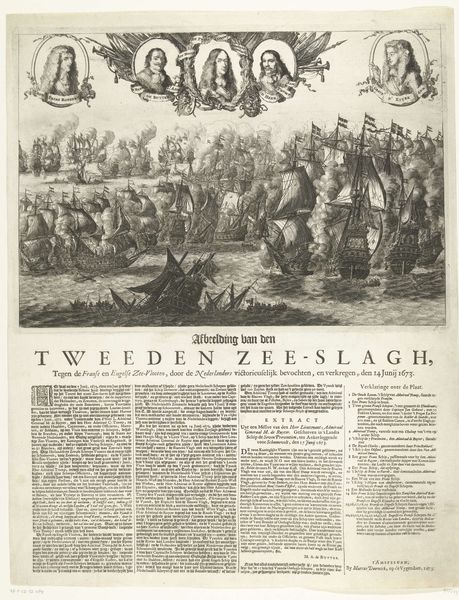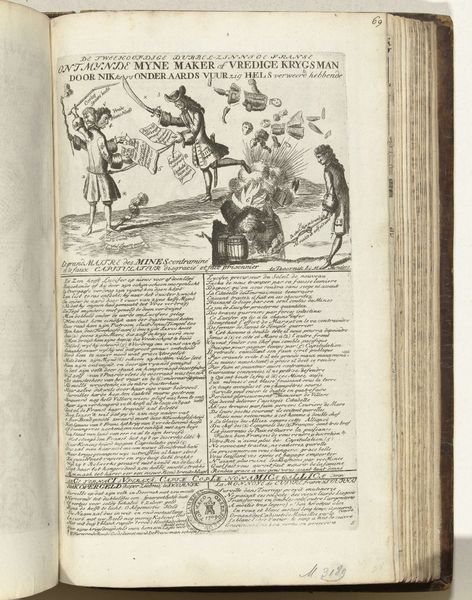
print, engraving
#
narrative-art
# print
#
landscape
#
romanticism
#
history-painting
#
engraving
Dimensions: height 542 mm, width 454 mm
Copyright: Rijks Museum: Open Domain
Editor: We're looking at "Het springen van de kanonneerboot van Jan van Speijk," or "The explosion of Jan van Speijk's gunboat," from 1831. It’s an engraving currently held at the Rijksmuseum. It strikes me as quite dramatic, even propagandistic. What do you see in this piece? Curator: I notice immediately the compositional dichotomy. The image is split: the upper portion containing a highly dramatic and visually arresting scene of maritime destruction, while the lower portion is dominated by dense textual elements. It calls to mind broadsides popular during periods of political and social upheaval. Editor: It definitely gives the sense of immediate news! But how does that relate to understanding the work itself? Curator: Let's examine the upper image further. Note the sharp contrast of light and shadow used to emphasize the exploding gunboat. The surrounding landscape is rendered in a more subdued, almost mournful tone, creating a clear focal point of explosive action. This juxtaposition contributes significantly to the work's intended emotional impact, no? Editor: It definitely creates a sense of chaos versus order, or past versus present. Do you think the text below the image reinforces or distracts from that reading? Curator: That is an excellent observation. While the imagery functions on an emotional level, the text roots the event within a specific socio-political context. The typeface, and the deliberate, emotive phrasing aim to stir feelings of national pride and remembrance. Editor: So it’s not just a scene, but a deliberate piece of rhetoric! Thanks for pointing out how those formal elements build its argument. Curator: Indeed. Recognizing these combined aspects is key to unlocking the deeper complexities inherent in this piece.
Comments
No comments
Be the first to comment and join the conversation on the ultimate creative platform.
